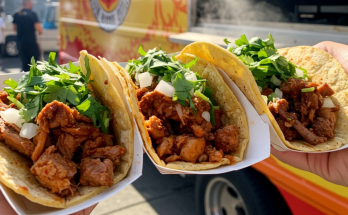For centuries, the cold, nutrient-rich waters of the North Atlantic have been synonymous with one fish: the Atlantic Cod. More than just a species, cod has been a cornerstone of coastal economies, a vital food source, and a driver of exploration and settlement. Its abundance shaped history, fed nations, and fueled industries. But how is this iconic fish brought from the vast ocean depths to our tables today? The answer, for a significant portion of the catch, lies in a method known as trawling.
Trawling is a commercial fishing technique that involves pulling a fishing net through the water behind one or more boats. Unlike static methods like traps or lines, trawling is a mobile, active form of hunting. The net, called a trawl, is typically funnel-shaped, tapering towards the back into a ‘cod-end’ where the fish are collected. Weighted doors, known as trawl doors or otter boards, are used to keep the net’s mouth open horizontally as it’s towed.
The Trawling Process Explained
The process begins with specialized vessels known as trawlers. These ships range in size from relatively small inshore boats to massive factory trawlers that can stay at sea for weeks or months, processing the catch onboard. Once the vessel reaches a suitable fishing ground, the trawl net is deployed over the stern or side. The heavy trawl doors are then released, which spread out due to water pressure as the net is towed. Depending on the target species and seabed type, the net can be towed along the bottom (bottom trawling) or through the water column (midwater trawling).
As the trawl is pulled, fish in its path are funneled into the net. The duration of a ‘tow’ varies depending on factors like depth, seabed conditions, and the density of the fish school. Once the captain believes a sufficient amount of fish has been caught, the net is hauled back onto the vessel using powerful winches. The cod-end is then hoisted aboard, and the catch is released onto the deck or into holding tanks.
Modern trawlers are equipped with sophisticated technology, including sonar to locate fish schools, GPS for navigation, and electronic sensors on the net to monitor its position, depth, and even how full the cod-end is. This technology allows for more precise targeting and can help optimize fishing effort, though challenges related to bycatch (catching non-target species) and habitat impact, particularly with bottom trawling, remain significant topics of research and management.
For the North Atlantic cod fishery, bottom trawling is a common method, targeting cod as they aggregate near the seabed. The scale of these operations can be immense, with nets large enough to engulf several jumbo jets. The efficiency of trawling means that a single vessel can catch vast quantities of fish, reflecting the industrial nature of much of today’s commercial fishing.
While trawling is highly effective for catching species like cod, its practice in the North Atlantic, like in many parts of the world, is subject to regulations aimed at managing fish stocks sustainably and mitigating environmental impacts. Quotas, fishing seasons, gear restrictions (like mesh size to allow smaller fish to escape), and closed areas are all tools used in an attempt to balance the economic importance of the cod fishery with the ecological health of the ocean.
Exploring the trawling process reveals the complex interplay between technology, economics, and the environment in modern fishing. The hunt for North Atlantic cod, a tradition spanning centuries, continues today powered by advanced vessels and gear, operating within a framework of evolving management practices aimed at preserving this vital resource for future generations.

